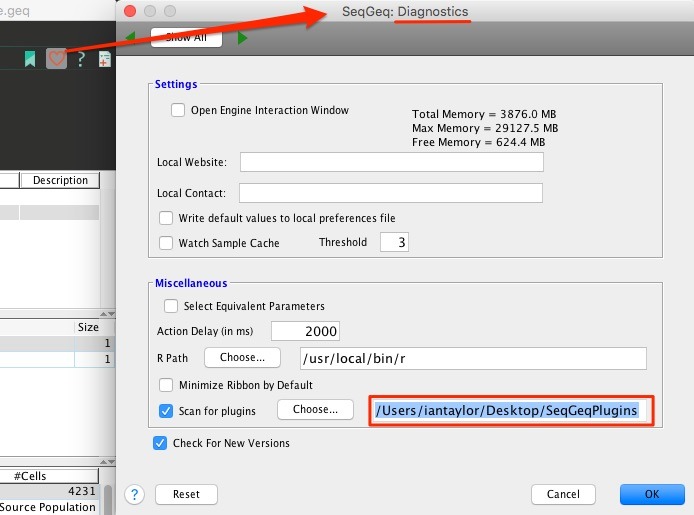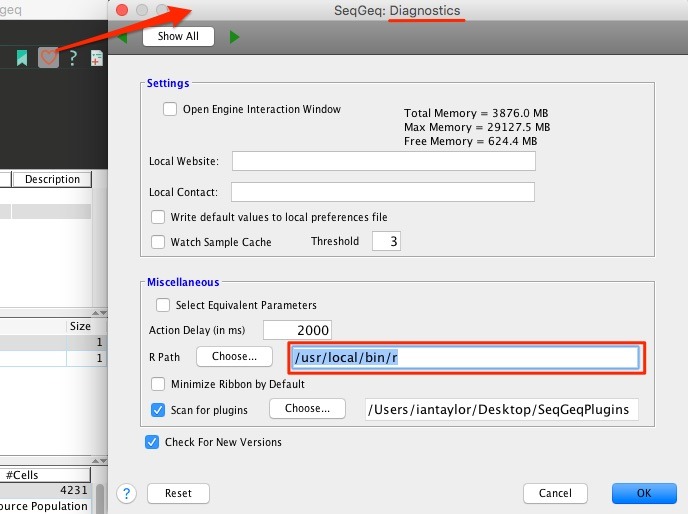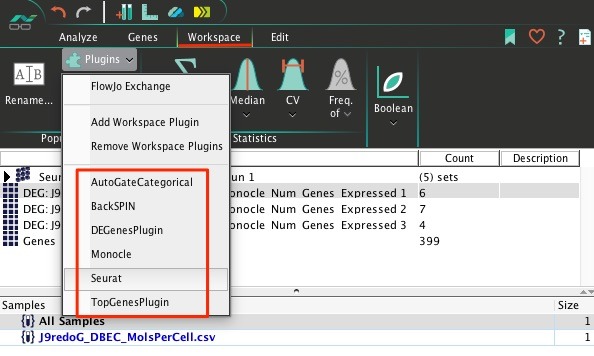Though the plugins require some setup, they can be well worth the trouble. The process for setting up plugins will depend slightly on whether or not they have dependancies in the R environment. If not, simply open the Diagnostics section of SeqGeq’s Preferences, and insert the appropriate file path to your SeqGeq plugins directory:

If your plugin(s) require a connection to the R environment, you’ll also need to install any R dependancies with that software platform separately – The plugin documentation itself should give you a good description of what R commands are needed for this process. You’ll also need to point SeqGeq’s Diagnostics Preferences to your R installation:

Using Plugins
Once all your dependancies are in place and connected to SeqGeq you should see Plugins available in the Plugins section of the Populations band, within your Workspace tab in SeqGeq’s workspace. Note, most plugins will require you select a population on which to run them, in order to activate and apply them from this menu:

Installing Plugins in FlowJo™ v10.7 (2 of 3)
Installing Plugins for SeqGeq™ (3 of 3)

